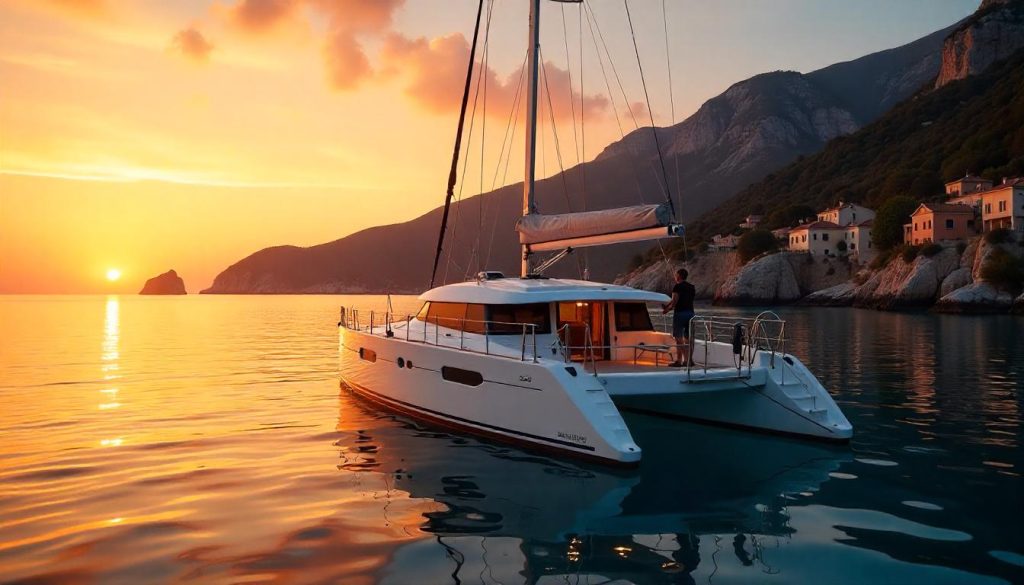The impact of climate change on yachting destinations is becoming a pressing concern for sailors and charter enthusiasts worldwide. As of Tuesday, May 20, 2025, at 10:11 AM +05, rising temperatures, shifting weather patterns, and rising sea levels are altering the landscapes and ecosystems that define popular sailing spots. These changes pose challenges for the yachting industry, from navigation hazards to stricter environmental regulations. This article examines how climate change affects yachting destinations, highlights vulnerable areas, and offers insights for adapting to these evolving conditions in 2025 and beyond.
Understanding the Global Climate Shift
Climate change influences yachting areas through several key factors. Rising global temperatures warm ocean waters, leading to coral bleaching and reduced marine biodiversity in regions like the Caribbean. Additionally, melting polar ice contributes to higher sea levels, threatening coastal marinas and low-lying islands. For instance, the Intergovernmental Panel on Climate Change (IPCC) predicts a sea level rise of up to 1 meter by 2100, impacting docks and anchorages worldwide.
Furthermore, extreme weather events, such as intensified hurricanes and storms, disrupt sailing schedules and damage infrastructure. According to the National Oceanic and Atmospheric Administration (NOAA), the Atlantic hurricane season in 2024 saw a record number of Category 4 and 5 storms, a trend expected to continue. Consequently, these shifts require yacht owners and charter companies to rethink their strategies for safety and sustainability.
Vulnerable Yachting Destinations
The Caribbean: Rising Seas and Coral Loss
The Caribbean faces significant environmental changes in yacht destinations due to climate influence. Rising sea levels threaten popular spots like the Bahamas, where low-lying cays are at risk of flooding. Moreover, warming waters have led to widespread coral bleaching, affecting snorkeling and diving sites around Barbados and the Virgin Islands. The Caribbean Tourism Organization reports that 50% of coral reefs could disappear by 2030 if trends persist.
Additionally, stronger hurricanes damage marinas and yachts, as seen with Hurricane Beryl in 2024, which caused millions in losses. Therefore, sailors must adapt by choosing more resilient routes or investing in storm-resistant vessels to navigate these challenges effectively.
The Mediterranean: Heatwaves and Water Restrictions
The Mediterranean experiences climate effects on yachting areas with increasing heatwaves and water scarcity. In Greece, summer temperatures often exceed 40°C, straining water supplies for yachts and coastal towns. Transitioning to this, stricter regulations limit water use, impacting onboard amenities like showers and pools. The European Environment Agency notes a 20% reduction in freshwater availability across Southern Europe since 2000.
Furthermore, rising sea temperatures disrupt marine ecosystems, affecting fish stocks vital to local cuisine. Consequently, yacht charter companies in Italy and Spain are adopting water-saving technologies and eco-friendly practices to comply with new laws, ensuring a sustainable future for this region.
Economic and Regulatory Responses
The yachting industry is responding to the impact of climate change on yachting destinations with innovative solutions. Many charter operators now invest in hybrid or electric yachts to reduce carbon footprints, aligning with the International Maritime Organization’s goal to cut emissions by 50% by 2050. For example, companies like GetBoat promote sustainable options, offering vessels with solar panels and energy-efficient systems.
Moreover, governments impose stricter regulations to protect marine environments. The European Union’s Marine Strategy Framework Directive requires yachts to use low-sulfur fuels and manage waste effectively. Additionally, some destinations, like the Maldives, ban single-use plastics onboard, pushing for greener practices. Thus, these measures encourage a shift toward eco-conscious yachting while supporting local economies.

Adattarsi alle condizioni mutevoli
Innovazioni tecnologiche
Sailors can leverage technology to mitigate the impact of climate change on yachting destinations. Advanced weather forecasting tools, such as those from PredictWind, help avoid storm-prone areas, ensuring safer voyages. Similarly, real-time sea level monitors assist in navigating rising tides, particularly in vulnerable regions like the Pacific Islands.
Additionally, eco-friendly propulsion systems, like hydrogen fuel cells, reduce environmental harm while maintaining performance. Transitioning to this, yacht designers incorporate lightweight materials to improve fuel efficiency, offering a practical response to climate challenges. Consequently, these innovations enhance safety and sustainability for independent explorers.
Planning and Flexibility
Flexible planning becomes essential when facing climate influence on sailing locations. Sailors should schedule trips during off-peak seasons to avoid extreme weather, such as avoiding the Caribbean during late summer hurricane months. Moreover, choosing destinations with natural barriers, like fjords in Norway, can shield yachts from harsh conditions.
Furthermore, partnering with charter companies like GetBoat allows access to updated route suggestions based on current climate data. Therefore, adapting itineraries ensures a smoother experience while respecting environmental limits in 2025.
The Role of Charter Companies
Charter companies play a vital role in addressing the impact of climate change on yachting destinations. They offer training on eco-friendly practices, such as proper anchoring to protect seabeds, and provide vessels equipped with green technologies. For instance, GetBoat’s platform highlights yachts with reduced emissions, helping customers make informed choices.
Additionally, these companies lobby for sustainable policies and share climate impact reports with clients, fostering awareness. Consequently, their efforts support both the industry and the preservation of yachting hotspots, ensuring long-term viability.
Future Outlook for Yachting Destinations
Looking ahead, the global warming impact on yachting will likely intensify, prompting further adaptation. By 2030, the IPCC predicts more frequent heatwaves and storms, pushing yacht design toward resilience and efficiency. Transitioning to this, destinations may introduce carbon offset programs, requiring charters to contribute to conservation efforts.
Moreover, emerging markets like Southeast Asia could become new yachting hubs as traditional spots face decline. Therefore, staying informed about climate trends and regulatory changes will help sailors navigate the evolving landscape of yachting destinations in the coming years.
Conclusione
The impact of climate change on yachting destinations is reshaping the industry, challenging sailors with rising seas, extreme weather, and stricter regulations. Vulnerable areas like the Caribbean and Mediterranean highlight the need for adaptation through technology, flexible planning, and sustainable practices. Charter companies, including platforms like GetBoat, are leading the charge with eco-friendly options and education. As we move through 2025, embracing these changes ensures the future of yachting remains vibrant, safe, and environmentally responsible for generations to come.

 L'impatto del cambiamento climatico sulle destinazioni per yachting">
L'impatto del cambiamento climatico sulle destinazioni per yachting">
